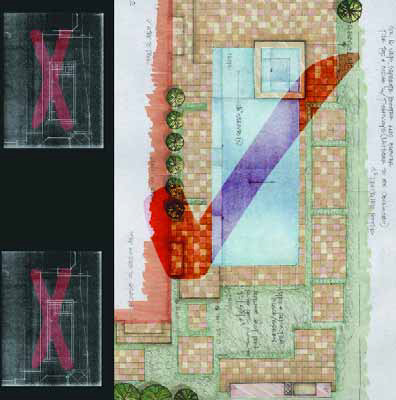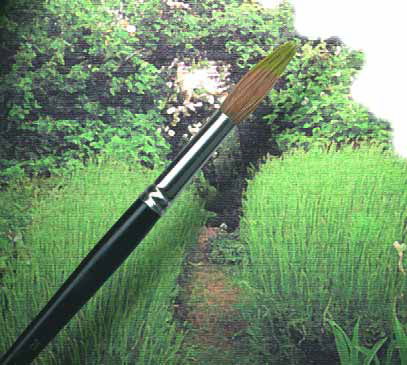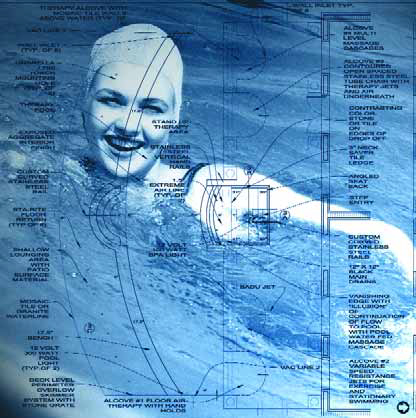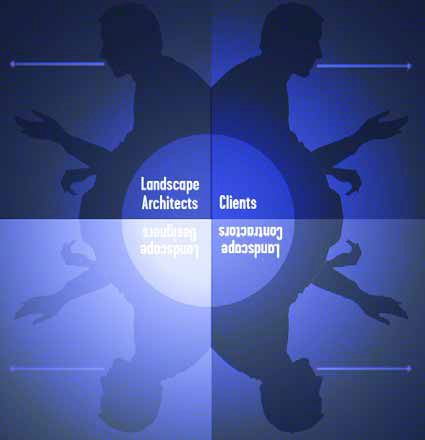communication
My clients' eyes light up when they first discuss color. They describe intense images of saturated reds, violets, and blues. The more color we can pack in, the better. No one yet has asked me for a garden awash in neutral grays. But what do they really want? As a landshaper, am I delivering the best service by designing a landscape overflowing with pure, vivid colors? As the hired expert, how am I to produce a landscape design that evokes the feeling they really want? That end result - the feeling, or emotional response, that the client gets from the garden - will not necessarily be achieved by placing bright colors everywhere. What we want is a garden that sings, not screams, with color. Of course to design this kind of garden, we designers must understand color ourselves. There is, unfortunately, an abundance of misunderstanding and misinformation on the subject. Let's aim at a more thoughtful understanding of color by approaching it in a logical, sequential manner. Let's explore how color really works, and how to design with color to form compositions that produce the feeling your clients
Practice makes perfect when it comes to developing the observational skills you need to support your design acumen. As I discussed last month, honing these abilities enables a designer to see individual and collective shapes within a garden setting in ways that can enhance the overall appearance of plant/hardscape combinations and turn them into cohesive and more compelling visual compositions. Among all of those artistic abilities is one specific skill that has served me best and will be my subject in this column: That is, the ability to determine the level of contrast my clients want to see in their garden spaces. As an artist, I've always been inspired by the areas in paintings that display the
Despite the axiom that "every client is a good client," we all know that some of them are wonderful to work with - and that dealing with others is a form of slow torture. I've always loved hearing the horror stories about bad customers that float around the watershaping trades: The telling and retelling of these nightmares (often with exaggerations as the stories travel from ear to ear) is often a treat, and I know I've had my share of therapeutic fun at the expense of a knucklehead or two. We don't generally hear quite so much about the good ones, but it's fair to say that most of us have lists of satisfied clients and that our experiences with them give us much of the motivation we have to stay in the business. What it boils down to is this: Each and every client is
Elevating the way we do things in this industry means addressing our gaps in knowledge on several levels. First, excellence means understanding the aesthetic side of watershaping - design traditions, art history and the nature of visual appeal. Second (and right in step) is the need to know how to build various types of systems properly. As an industry, in other words, we need to know how to avoid mistakes. In February, Genesis 3 staged a construction school in Orlando - and what follows isn't a commercial; rather it's a point of departure for a discussion long overdue in our industry. What struck me is that
As the fields of landscape architecture and watershaping intermingle, the knowledge bases for each trade increasingly need to be shared across various design, engineering and construction disciplines. That sharing, unfortunately, has been relatively slow to develop, which means that, as a designer and builder and of custom high-end watershape and landscape projects, I am often frustrated by the lack of detail I find in plans and specifications generated on all levels of the trade. Although this deficiency flows freely from all sectors, the most frequent sources of inadequacy in watershape plans are landscape architects and designers, too many of whom offer information that is disturbingly vague and thoroughly lacking in detail. We've all seen the blue patch on the overhead plan view - a grossly inadequate delineation of a significant design component if ever there was one. Contractors presented with such documentation are left to define specific details themselves and essentially are asked to build some version of that blue patch as they
Almost everyone I've talked to recently is busier than ever these days. And it's across the boards, from landscape architects and designers to pool and spa builders and subcontractors of every type: Everyone is swamped, and this year in particular they all seem to be having trouble just keeping up. The odd thing is that nobody I've spoken with has an entirely clear idea why this year is so busy. At best, the economy is mixed: oil and gas prices are through the roof, the stock market has been extremely inconsistent and consumer confidence has been shaky. Yet watershaping projects just seem to keep on rolling, no matter the news. One undeniable factor seems to be driving this demand - that is, the
Where you've come from often has everything to do with where you're going. As a case in point, let me describe a project that had its origins all the way back at the very start of my work as a watershaper. My pool industry career began soon after I graduated from college. At the time, I was living in a garage in a rough part of Los Angeles and really wasn't sure what I wanted to do. I had studied ancient history, three-dimensional design and industrial design and had been accepted as a PhD candidate in pharmacology at the University of the Pacific. I was convinced I wanted to be a designer, but I wasn't sure which field I should enter. Then one day, at a time when I was about as broke as an organ grinder without a monkey, I answered an ad in the newspaper looking for
I've never been big on trade shows and conferences. For years I have resisted them in the belief that they were mostly for those who had time to attend them and craved the camaraderie and social opportunities they offered. I've always looked at the programs and have seen that there's usually been something to learn during these events, but I brushed off the possibility of attending because I always thought I could get most of what I needed by working and paying attention to books and magazines. Also, there was always the issue that, as the sole provider in a one-person operation, spending so many days away from my clients and prospects would prove
Wonderful projects often proceed at their own paces. More often than not, high-end clients on either the commercial or residential side will require us to spend a great deal of time and effort in developing, adjusting and revisiting designs so they wind up with exactly the watershapes and spaces that best suit their needs and desires. Sometimes that process is tremendously involved, as has been the case with a project I discussed in a previous "Aqua Culture" installment (May 2004, page 10). The clients are creating what they're calling a "world-class pampering spa" as a major expansion of an existing facility in Jacksonville, Fla. Our work on the project includes a broad range of
I recently wrote a Letter to the Editor of Landscape Architecture, the magazine of the American Society of Landscape Architects, in response to an editorial he wrote on the lack of interest among landscape architects in plant knowledge. The gist of his commentary was that, for too many years now, landscape architects had been focusing on hardscape and overall design and were reserving little creativity, interest, or care for botanical adornments. My response was a supportive rant, as this has been a pet peeve of mine for years and I strongly believe that






















